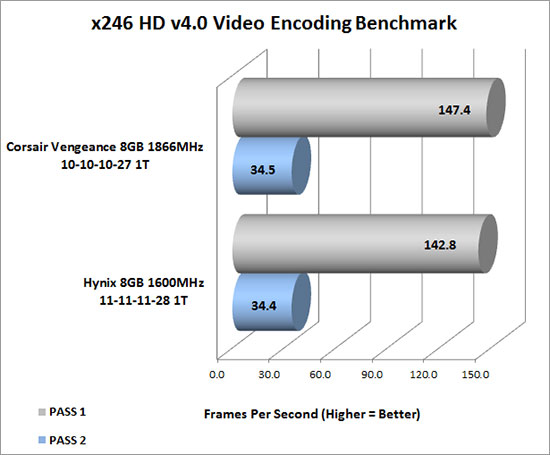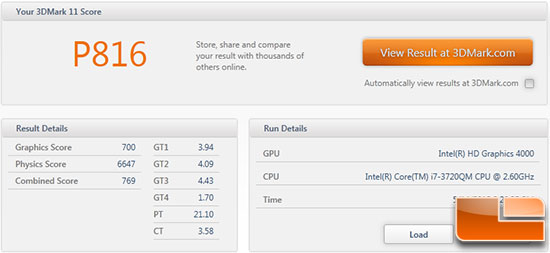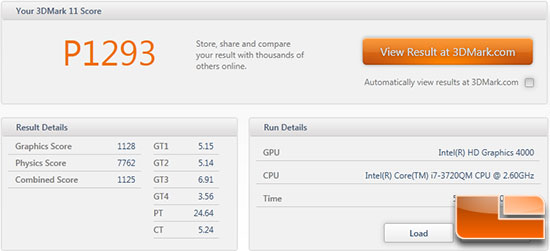Corsair Vengeance 8GB 1866MHz CL10 Laptop SODIMM Memory Kit Review
X264 & Futuremark 3DMark 11
x264 HD v4.0 Benchmark
The x264 HD v4.0 Benchmark is a reproducible measure of fast your machine can encode a short HD-quality video clip into a high quality x264 video file. It’s nice because everyone running it will use the same video clip and software. The video encoder (x264.exe) reports a fairly accurate internal benchmark (in frames per second) for each pass of the video encode and it also uses multi-core processors very efficiently. All these factors make this an ideal benchmark to compare different processors and systems to each other.

As you can see when it comes to video encoding that the memory bandwidth really isn’t the limiting factor with this Intel Ivy Bridge powered laptop, but you can see some small gains on the first pass.
Futuremark 3DMark 11 (version 1.0.3)
3DMark 11 is the latest version of the worlds most popular benchmark for measuring the 3D graphics performance of gaming PCs. 3DMark 11 uses a native DirectX 11 engine designed to make extensive use of all the new features in DirectX 11, including tessellation, compute shaders and multi-threading. We ran 3DMark 11 with the default performance preset on our Intel Ivy Bridge powered laptop to see what happens when you increase the clock frequency and tighten the timings on the memory.
8GB DDR3 1600MHz CL11 Memory:

8GB DDR3 1866MHz CL10 Memory:

We ran 3DMark 11 and got an overall score of P816 with the 8GB 1600MHz CL11 memory kit and we saw that score jump up to P1293 with the Corsair Vengeance 8GB 1866MHz CL10 memory kit. This is an improvement of 477 3DMarks or an 58.5% improvement in 3DMark. This is almost too good to be true, but remember we are using the integrated graphics. The Intel Core i7-3720QM processor uses Intel HD Graphics 4000 and it appears that this GPU loves the additional memory bandwidth and tighter timings.

Comments are closed.